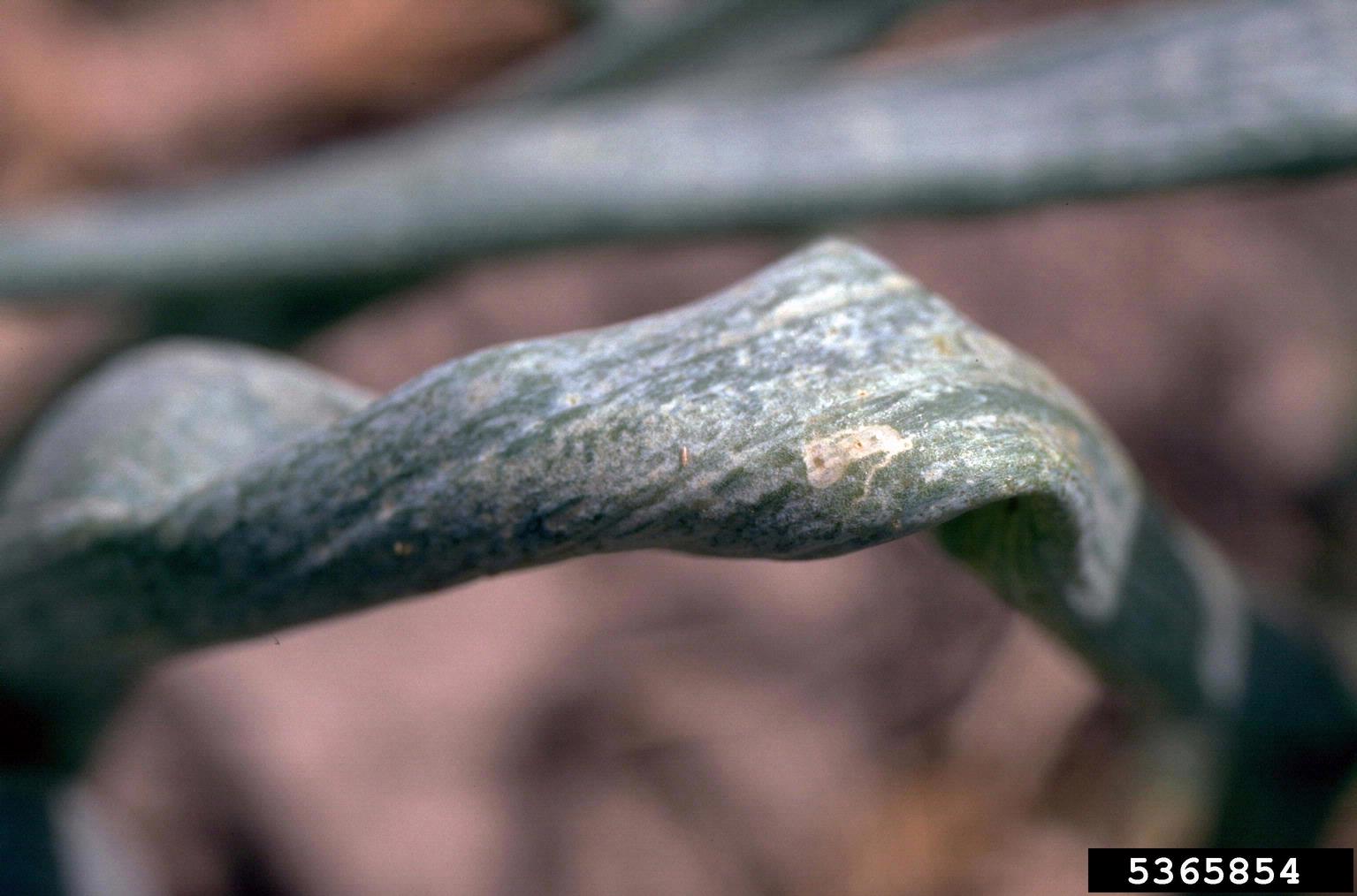Thrips On Onions And Why Onion Tops Curl Up


If your onion tops curl up, you may have a case of onion thrips. In addition to affecting onions, however, these pests have also been known to go after other garden crops including:
You may also find thrips feeding on melons and some types of flowers. These insects are most active during spring but continue their damage throughout fall before overwintering in nearby debris.
Onion Thrips Damage
The trail of damage left by these pests can be easily seen as they can literally suck the life right of the plants. Typically, thrips prefer to feed on plant tissue from newly emerging leaves. Besides curling onion leaves, these insects produce silver or white-looking streaks on foliage. The young leaves appear distorted, and severely injured leaves may even turn brown and die. Bulb growth may be affected as well, being much smaller in size and deformed.
Controlling Thrips on Onions
While overhead watering, as well as rain, can help reduce their numbers, other controls are often necessary. Biological control of onion thrips generally includes the introduction of the pest's natural enemies such as minute pirate bugs, predatory thrips species, and lacewings. Unfortunately, these are only effective with small numbers of thrips, and they are also susceptible to most insect sprays. Although damage from thrips on onions is most prevalent during early bulbing, it is highly recommended that these pests be controlled well before this. Otherwise, their populations may become large and more difficult to control. You can evaluate these numbers by counting them on random plants throughout the garden. Pull the leaves apart and check under the leaf folds as well as near the base of the bulb. The nymphs can be recognized by their pale-yellow color while the winged adults will be light to dark brown. Having at least 15 to 30 of these insects means additional control is needed. Most can be killed off with various insecticides, but contact-residual types or neem oil are more effective. Be sure to thoroughly coat the plant in order to compensate for the shape of the onion leaves.
Gardening tips, videos, info and more delivered right to your inbox!
Sign up for the Gardening Know How newsletter today and receive a free copy of our e-book "How to Grow Delicious Tomatoes".

Nikki Tilley has been gardening for nearly three decades. The former Senior Editor and Archivist of Gardening Know How, Nikki has also authored six gardening books.
-
 Looking For Plants To Give You The Soft And Fuzzies? Try These 5 Fuzzy Leaf Plant Options
Looking For Plants To Give You The Soft And Fuzzies? Try These 5 Fuzzy Leaf Plant OptionsLovers of texture, drama, silver foliage and tactile plants will adore these special sensory garden additions. These fuzzy leaf plant options will leave you all aglow
By Susan Albert
-
 Get Ready For A Summer Of Hummers! Grow These Full Sun Hummingbird Plants and Flowers
Get Ready For A Summer Of Hummers! Grow These Full Sun Hummingbird Plants and FlowersIf you’re lucky enough to enjoy a sunny backyard, make sure you are maxing out on your pollinator opportunities and grow these full sun hummingbird plants and flowers
By Tonya Barnett